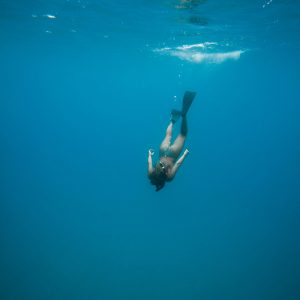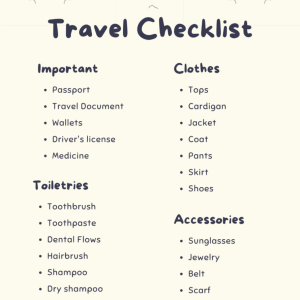Oman is a treasure trove of natural beauty, from its rugged mountains and vast deserts to its pristine coastline. But for divers, the real magic lies beneath the waves. The Daymaniyat Islands, a protected nature reserve off the coast of Muscat, offer some of the most breathtaking underwater experiences in the region. Whether you’re a seasoned diver or a beginner, these islands promise an unforgettable adventure. In this guide, we’ll cover everything you need to know about diving in the Daymaniyat Islands, including which marina to leave from, how long it takes to reach the islands, what to expect underwater, and what to bring for your trip.
Why Dive in the Daymaniyat Islands?
The Daymaniyat Islands are a cluster of nine small islands renowned for their crystal-clear waters, vibrant coral reefs, and abundant marine life. Declared a nature reserve in 1996, the islands are a haven for biodiversity, making them a top destination for divers and snorkelers alike. Here’s what makes them special:
- Pristine Coral Reefs: The islands are home to healthy coral reefs teeming with life, including hard and soft corals.
- Rich Marine Life: Expect to see everything from colorful reef fish and sea turtles to rays, moray eels, and even whale sharks during certain seasons.
- Clear Visibility: The waters around the islands are known for their exceptional visibility, often exceeding 20 meters.
- Protected Environment: As a nature reserve, the islands are carefully managed to preserve their ecosystems, ensuring a sustainable diving experience.
Getting to the Daymaniyat Islands: Which Marina to Leave From
Most diving trips to the Daymaniyat Islands depart from marinas in Muscat, the capital of Oman. Here are the two main marinas used for diving excursions:
1. Al Mouj Marina
Located in the heart of Muscat, Al Mouj Marina is a popular starting point for diving trips. It’s well-equipped with facilities, including parking, restaurants, and shops, making it a convenient choice for divers. Many dive operators based in Muscat use this marina for their excursions.
2. Bandar Al Rowdha Marina
Another common departure point is Bandar Al Rowdha Marina, situated closer to the eastern edge of Muscat. This marina is known for its easy access to the open sea, reducing travel time to the Daymaniyat Islands. It’s also a hub for fishing and sailing activities.
Duration from the Marina to the Daymaniyat Islands
The Daymaniyat Islands are located approximately 18 kilometers (11 miles) off the coast of Muscat. The boat ride from either Al Mouj Marina or Bandar Al Rowdha Marina typically takes between 45 minutes to 1.5 hours, depending on weather conditions and the type of boat used. Speedboats and smaller vessels tend to be faster, while larger dive boats may take a bit longer.
During the journey, you’ll enjoy stunning views of Oman’s coastline and the sparkling waters of the Arabian Sea. Keep an eye out for dolphins, which are often spotted swimming alongside boats.
What to Expect While Diving in the Daymaniyat Islands
Diving in the Daymaniyat Islands is an experience like no other. Here’s a breakdown of what you can expect during your underwater adventure:
1. Dive Sites for All Levels
The islands offer dive sites suitable for all experience levels, from beginners to advanced divers. Some popular sites include:
- Aquarium: A shallow dive site perfect for beginners, featuring calm waters and an abundance of marine life.
- Daymaniyat Islands East: Known for its dramatic drop-offs and coral gardens, this site is ideal for intermediate and advanced divers.
- The Caves: A thrilling site for experienced divers, featuring underwater caves and swim-throughs.
2. Marine Life Encounters
The Daymaniyat Islands are a hotspot for marine biodiversity. Here are some of the creatures you might encounter:
- Sea Turtles: Green turtles and hawksbill turtles are commonly seen grazing on seagrass or resting on the reef.
- Reef Fish: Schools of colorful fish, such as angelfish, parrotfish, and butterflyfish, are a common sight.
- Rays: Spotted eagle rays and stingrays glide gracefully through the water.
- Sharks: During certain times of the year, you may spot whale sharks, the gentle giants of the sea.
- Nudibranchs and Macro Life: For macro enthusiasts, the islands are home to a variety of tiny critters, including nudibranchs and shrimp.
3. Coral Reefs
The coral reefs in the Daymaniyat Islands are some of the healthiest in the region. You’ll find a mix of hard corals, such as brain and staghorn corals, and soft corals, like sea fans and gorgonians. The reefs are a riot of color and provide a habitat for countless marine species.
4. Water Conditions
The water temperature in the Daymaniyat Islands ranges from 22°C (72°F) in the winter to 30°C (86°F) in the summer. Visibility is typically excellent, often exceeding 20 meters (65 feet). Currents are generally mild, but some sites may have stronger currents, so it’s important to follow your dive guide’s instructions.
Turtles and Sharks: Highlights of the Daymaniyat Islands
One of the most magical aspects of diving in the Daymaniyat Islands is the chance to encounter sea turtles and sharks. These majestic creatures are a highlight for many divers and add an extra layer of excitement to your underwater adventure.
Sea Turtles
The Daymaniyat Islands are a sanctuary for sea turtles, particularly green turtles and hawksbill turtles. These gentle creatures are often seen gliding gracefully through the water or resting on the reef. Here’s what you need to know about turtle encounters:
- Best Time to See Turtles: Turtles can be seen year-round, but they are most active during the nesting season, which typically runs from April to September.
- Behavior: Turtles are generally calm and unbothered by divers, but it’s important to maintain a respectful distance and avoid touching or chasing them.
- Conservation: The Daymaniyat Islands are a protected area, and efforts are made to conserve turtle populations. By following responsible diving practices, you can help protect these incredible animals.
Sharks
While sharks might seem intimidating, the species found in the Daymaniyat Islands are generally harmless to humans. The most commonly spotted sharks are whale sharks, which are filter feeders and pose no threat to divers. Here’s what to expect:
- Whale Sharks: These gentle giants are often seen during the warmer months, particularly between September and November. Swimming alongside a whale shark is a once-in-a-lifetime experience.
- Reef Sharks: Occasionally, you may spot blacktip or whitetip reef sharks. These shy creatures are more curious than aggressive and will usually swim away if approached.
- Safety Tips: Always follow your dive guide’s instructions and avoid sudden movements when encountering sharks. Remember, they are an essential part of the marine ecosystem and deserve our respect.
What to Bring for Your Diving Trip
Proper preparation is key to ensuring a safe and enjoyable diving experience. Here’s a checklist of what to bring:
1. Diving Gear
While most dive operators provide rental equipment, it’s always a good idea to bring your own if you have it. Essential gear includes:
- Mask, snorkel, and fins
- Wetsuit (3mm to 5mm, depending on the season)
- BCD (buoyancy control device) and regulator
- Dive computer
- Underwater camera (optional but highly recommended)
2. Protective Gear
- Sunscreen (reef-safe to protect the marine environment)
- Hat and sunglasses for the boat ride
- Rash guard or UV-protective clothing
3. Personal Items
- Towel
- Change of clothes
- Reusable water bottle
- Snacks (check with your dive operator if meals are provided)
4. Documentation
- Dive certification card
- Logbook
- Passport or ID (required for some boat trips)
5. Emergency Supplies
- Motion sickness medication (if you’re prone to seasickness)
- First aid kit
- Dry bag for keeping your belongings safe and dry
Tips for a Memorable Diving Experience
- Book with a Reputable Dive Operator: Choose a dive operator with good reviews and experienced guides. They’ll ensure your safety and help you make the most of your dive.
- Respect the Environment: Avoid touching or stepping on coral, and never disturb marine life. Follow the principles of responsible diving to protect this fragile ecosystem.
- Stay Hydrated: Diving can be dehydrating, so drink plenty of water before and after your dives.
- Listen to Your Guide: Pay attention to the dive briefing and follow your guide’s instructions at all times.
- Capture the Moment: Bring an underwater camera to document your adventure, but remember to enjoy the experience firsthand too.
Diving in the Daymaniyat Islands is a dream come true for underwater enthusiasts. From the vibrant coral reefs and diverse marine life to the clear waters and serene surroundings, every aspect of this experience is magical. Whether you’re exploring the islands for the first time or returning for another adventure, you’re sure to be captivated by their beauty.
So pack your gear, book your trip, and get ready to dive into the underwater wonders of Oman’s Daymaniyat Islands. It’s an experience you’ll cherish for a lifetime.










